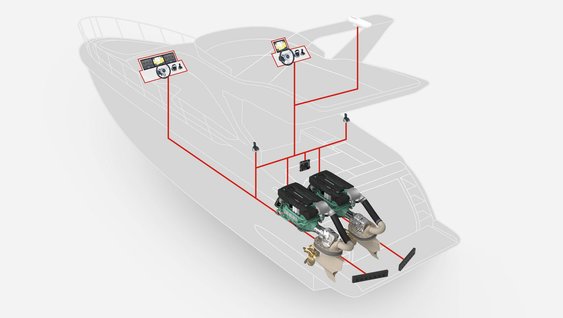(GOTHENBURG, Sweden) — In close collaboration with electrification experts Danfoss Editron, Volvo Penta is powering two hybrid vessels using pilot technology. Set to be launched in summer 2021, these vessels are an innovative combination of integrated electric Volvo Penta Inboard Performance Systems (IPS) gensets, and advanced vessel management systems.
In spring 2020 the Volvo Penta team took on a pilot project for longtime customer and IPS user MHO & Co. This Danish operator’s mission was to create two hybrid crew transfer vessels (CTVs) for operator Orsted – one of the world’s biggest wind farm operators. Combining the best-in-class propulsion – Volvo Penta IPS – and Danfoss Editron’s expertise in marine electrification systems and in-house designed electric propulsion motors and generators, the companies are working on creating an advanced hybrid solution that has maximum uptime, efficiency, and maneuverability.
The 82-foot CTVs – designed by MHO & Co. in cooperation with Incat Crowther in the United Kingdom and Australia and built by Afai Southern Shipyard in China – are a global collaboration. Both vessels will be capable of carrying 24 crew and fitted with a large lounge area and eight cabins. The CTVs will serve Orsted’s Hornsea Two offshore wind farm off the Yorkshire coast in the North Sea.
Volvo Penta marine gensets will help power these vessels – the electric propulsion power for the drive line will come from five variable-speed Volvo D8 gensets. The use of variable-speed gensets combined with the selectable multi-genset option has major environmental advantages and will ensure high availability, resulting in low downtime. Additionally, the smaller D8 units allow for future technologies by replacing one (or more) D8 with fuel cells or similar when technology allows.

